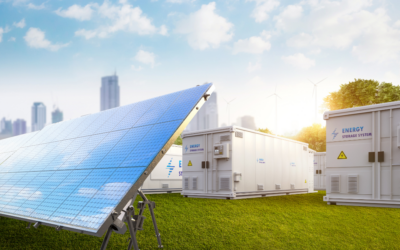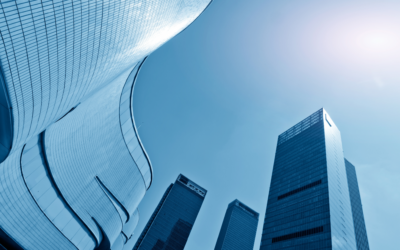In an era of increasing environmental consciousness, commercial real estate owners and developers are recognizing the importance of sustainability and adopting green practices to reduce their carbon footprint and create environmentally friendly buildings.
Going green not only helps preserve the planet but also offers numerous benefits, such as reduced operating costs, improved tenant satisfaction, and enhanced marketability.
In this blog, we will explore eight effective strategies to make your commercial real estate property more environmentally friendly, energy-efficient, and socially responsible.
1. Energy-Efficient Lighting:
One of the simplest yet most impactful ways to make your commercial property more eco-friendly is by switching to energy-efficient lighting.
Traditional incandescent bulbs consume excessive energy and have a shorter lifespan, resulting in higher energy costs and frequent replacements.
By replacing them with energy-efficient alternatives, such as LED (Light Emitting Diode) lights, you can significantly reduce energy consumption.
LED bulbs consume up to 80% less energy, have a longer lifespan, emit less heat, and offer better-quality lighting. This not only helps lower energy bills but also reduces greenhouse gas emissions.
2. Smart Building Systems:
Integrating smart building systems is another effective strategy to enhance energy efficiency in commercial properties. Smart technologies utilize sensors, data analytics, and automation to optimize energy consumption based on occupancy and ambient conditions.
For example, automated lighting systems can adjust brightness levels based on natural light availability and occupancy, reducing unnecessary energy waste.
Similarly, smart heating, ventilation, and air conditioning (HVAC) systems can adjust temperature settings based on occupancy patterns, saving energy while maintaining a comfortable environment.
By implementing smart building technologies, property owners can achieve substantial energy savings and contribute to a greener future.
3. Renewable Energy Sources:
Integrating renewable energy sources is a significant step towards achieving sustainable commercial property. Renewable energy options, such as solar power or wind turbines, enable on-site generation of clean electricity.
Solar panels can be installed on rooftops or in open spaces to harness the sun’s energy, while wind turbines can be utilized in suitable locations to capture wind power.
By utilizing renewable energy sources, commercial properties can reduce their reliance on fossil fuels, lower greenhouse gas emissions, and potentially achieve long-term cost savings through reduced utility bills and incentives like net metering.
4. Water Conservation:
Water conservation is crucial for sustainable commercial properties. Implementing water-saving strategies can significantly reduce water consumption and minimize the strain on local water resources.
Installing water-efficient fixtures, such as low-flow faucets and toilets, can help reduce water usage without compromising functionality. Smart water conversion systems can be employed to optimize outdoor watering schedules based on weather conditions, soil moisture, and plant water requirements.
Additionally, implementing rainwater harvesting systems allows for the collection and storage of rainwater, which can be utilized for non-potable purposes like landscape irrigation and toilet flushing.
Water conservation measures not only contribute to environmental sustainability but also help reduce water bills and promote responsible water management.
5. Sustainable Materials and Construction:
Choosing sustainable materials and construction practices is essential for creating environmentally friendly commercial properties.
Sustainable building materials, such as recycled or reclaimed materials, can reduce the demand for virgin resources and minimize waste. Additionally, selecting locally sourced materials helps reduce carbon emissions associated with transportation.
Opting for low volatile organic compound (VOC) paints and adhesives contributes to healthier indoor air quality. Insulation made from recycled materials, such as cellulose or denim, can improve energy efficiency and reduce heating and cooling demands.
Obtaining certifications like LEED (Leadership in Energy and Environmental Design) can ensure sustainable construction practices, enhance the building’s marketability, and provide a comprehensive framework for environmentally responsible design and operation.
6. Waste Management and Recycling:
Implementing comprehensive waste management and recycling programs within commercial properties is crucial for minimizing waste and promoting sustainable practices.
Property owners should encourage tenants to adopt recycling practices and provide designated recycling areas throughout the premises.
Collaborating with local recycling centers ensures that waste materials are properly disposed of and recycled. Implementing a waste reduction strategy that includes source separation, recycling, and composting can divert a significant portion of waste from landfills.
Furthermore, exploring opportunities for waste-to-energy technologies, such as anaerobic digestion or biomass conversion, can provide alternative means of managing organic waste and generating renewable energy.
7. Green Roofing and Landscaping:
Green roofing systems and sustainable landscaping practices can significantly contribute to the environmental sustainability of commercial properties.
Green roofs involve the installation of vegetation on rooftops, providing numerous benefits. They improve building insulation, reducing energy demands for heating and cooling.
Green roofs also absorb rainwater, reducing stormwater runoff and minimizing strain on municipal drainage systems. Additionally, they provide natural habitats for birds and insects, promoting biodiversity in urban environments.
Sustainable landscaping practices include incorporating native plants that require less water and maintenance, designing rain gardens to capture and filter stormwater runoff, and utilizing permeable pavements that allow water to infiltrate the ground, reducing water runoff and preventing soil erosion.
8. Indoor Air Quality:
Prioritizing indoor air quality is essential for creating a healthy and comfortable environment for building occupants. Poor indoor air quality can lead to health issues and reduce productivity.
To improve indoor air quality, commercial properties should use low-VOC materials, such as paints, adhesives, and carpets, which emit fewer harmful chemicals.
Adequate ventilation is crucial for the removal of indoor pollutants and the introduction of fresh air. Regular maintenance of HVAC systems, including air filters and duct cleaning, ensures proper functioning and improves indoor air quality.
Employing indoor air quality monitoring systems can provide real-time data on air quality parameters, enabling proactive measures to maintain a healthy indoor environment.
9. Electrochromic Glass:
Another innovative technology that can enhance the sustainability of commercial real estate is electrochromic glass. This advanced glass technology allows for the dynamic control of sunlight and heat entering a building.
Electrochromic glass windows can be electronically tinted or cleared to adjust the amount of natural light and heat transmission, reducing the reliance on artificial lighting and HVAC systems.
By using electrochromic glass, commercial properties can optimize energy efficiency by reducing the need for excessive heating, cooling, and artificial lighting.
The tinting capability of electrochromic glass allows for glare reduction and improved occupant comfort, while still maintaining a connection with the outdoor environment.
Implementing electrochromic glass in commercial buildings not only contributes to energy savings but also enhances the overall occupant experience.
The ability to control natural light and optimize thermal comfort promotes productivity, reduces eyestrain, and creates a pleasant indoor environment.
Moreover, electrochromic glass aligns with sustainability goals by reducing the reliance on fossil fuel-based energy sources and decreasing greenhouse gas emissions. It allows commercial properties to actively participate in energy efficiency initiatives and support a greener future.
10. Microgrid Integration:
Integrating a microgrid system is a cutting-edge solution that can greatly enhance the sustainability and resilience of commercial real estate properties.
A microgrid is a localized energy system that combines renewable energy sources, energy storage, and advanced control systems to operate independently or in coordination with the main power grid.
By incorporating a microgrid, commercial properties can optimize energy generation and consumption, leading to increased energy efficiency and reduced reliance on traditional power sources.
Microgrids often utilize renewable energy sources like solar panels, wind turbines, or biomass systems, allowing for cleaner and greener energy generation.
One of the significant benefits of a microgrid is its ability to provide energy resiliency during power outages. With an energy storage component, the microgrid can store excess energy during periods of low demand and deploy it during peak demand or in the event of a grid failure.
This ensures continuous power supply to critical operations, enhances business continuity and reduces downtime.
Additionally, microgrids offer the opportunity for demand response programs, where commercial properties can actively adjust their energy usage in response to grid conditions or price signals. This flexibility allows them to take advantage of off-peak energy rates and reduce their overall energy costs.
Moreover, integrating a microgrid system promotes grid independence and energy self-sufficiency.
Commercial properties can generate their own renewable energy and become less reliant on centralized power sources, contributing to a more resilient and decentralized energy infrastructure.
From an environmental perspective, microgrids reduce greenhouse gas emissions by minimizing the use of fossil fuel-based electricity.
By relying on renewable energy sources and optimizing energy consumption, commercial properties can significantly reduce their carbon footprint and contribute to mitigating climate change.
Conclusion:
Transforming commercial real estate into green and environmentally friendly spaces requires a proactive approach and a commitment to sustainable practices.
By implementing strategies such as energy-efficient lighting, smart building systems, renewable energy sources, water conservation measures, sustainable materials and construction practices, waste management and recycling programs, green roofing and landscaping, and prioritizing indoor air quality, commercial property owners can significantly reduce their environmental impact, lower operating costs, and enhance the overall quality and value of their properties.
Embracing sustainability not only aligns with global environmental goals but also positions commercial real estate as a responsible and attractive investment option in an increasingly eco-conscious world.
Let us work together to create a greener, more sustainable future in the realm of commercial real estate.





